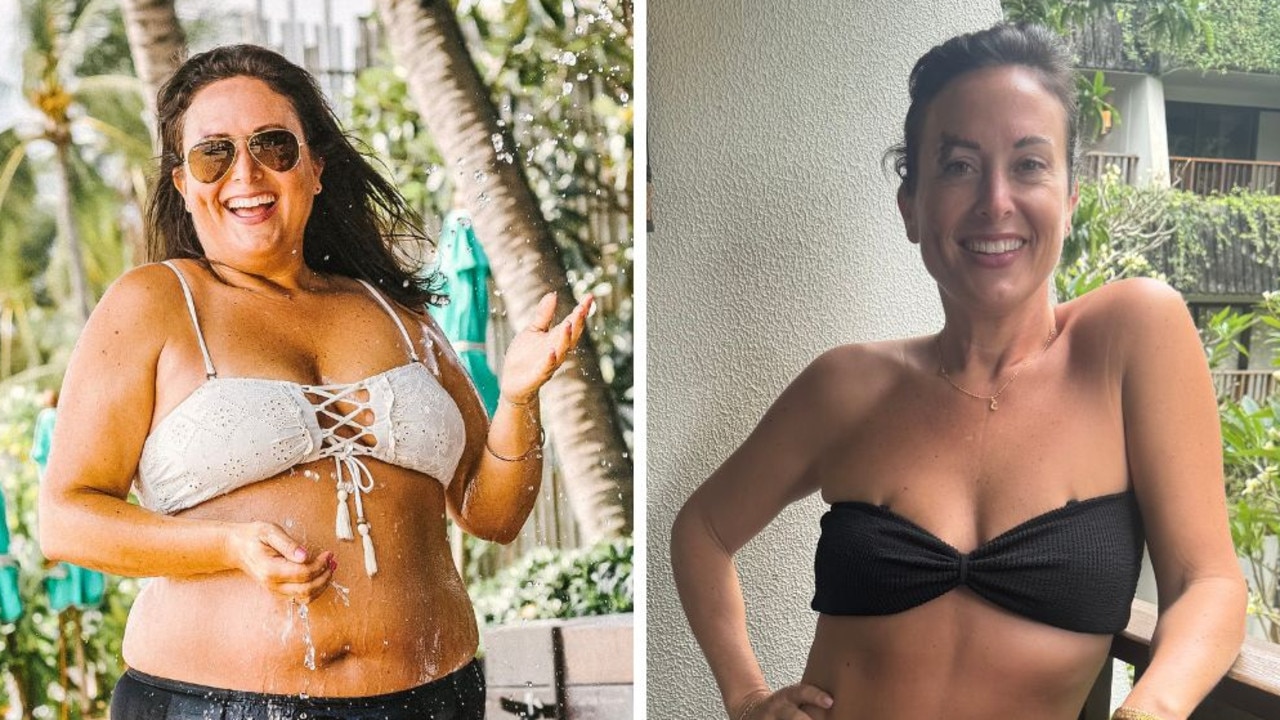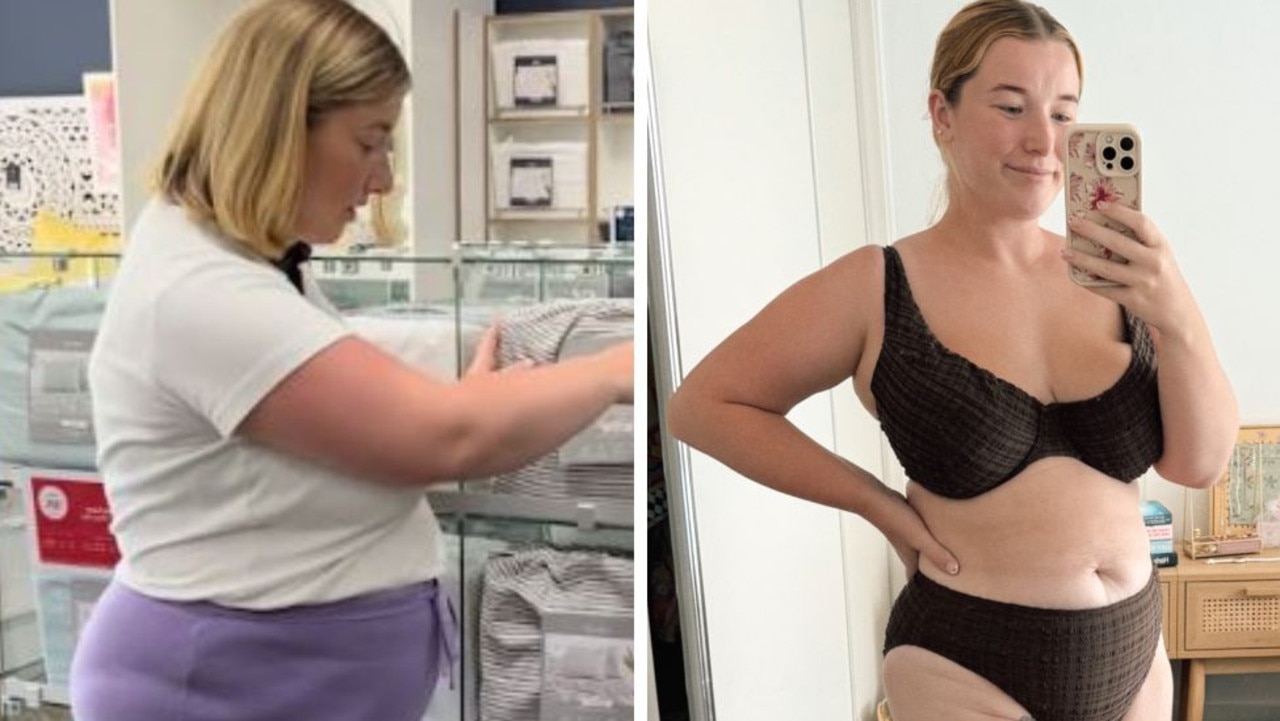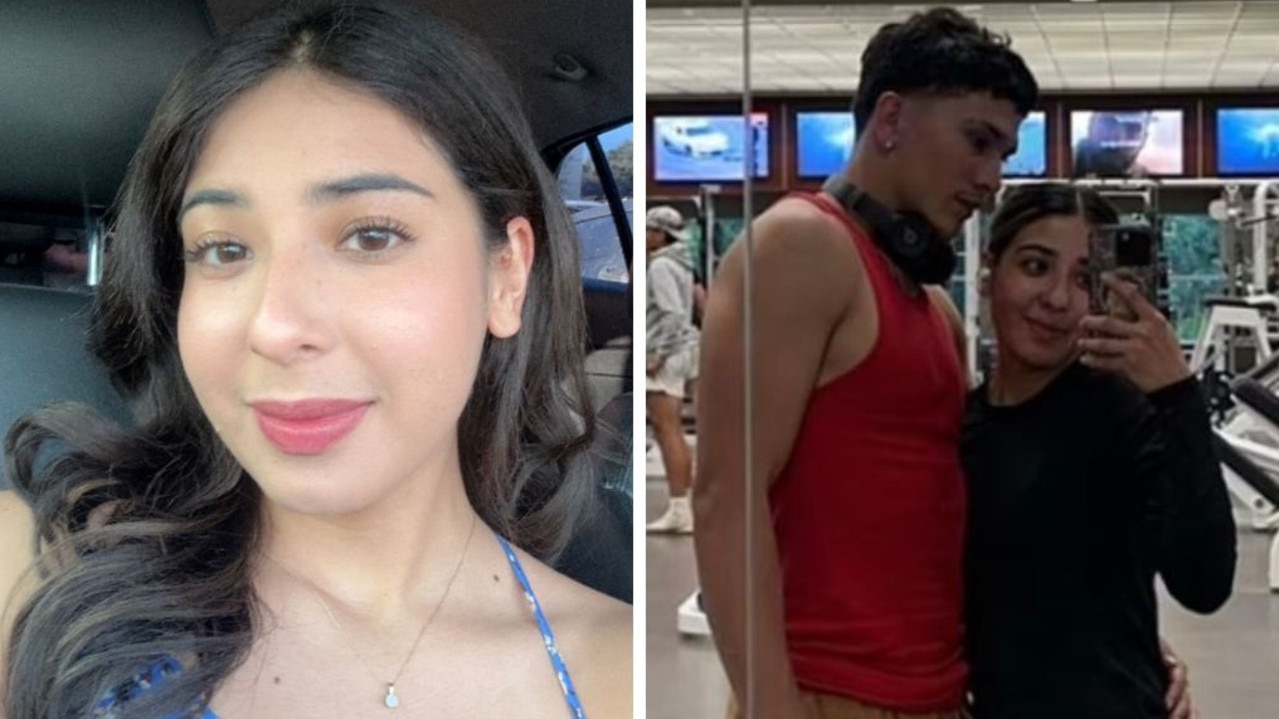How to be fit and strong at any age
NO matter how many candles were on your last birthday cake, follow the inspiration of these active women and take the steps to better your own health. You might be surprised at what you achieve.
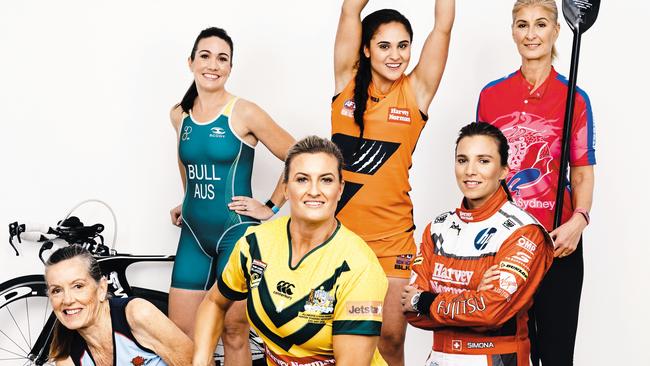
NO matter how many candles were on your last birthday cake, follow the inspiration of these active women and take the steps to better your own health.
You might be surprised at what you achieve.
HANEEN ZREIKA
Age: 17
Sport: AFL
Haneen isn’t your average teenager: she’s a star in the Auburn Giants AFL team and is eyeing off a place in the inaugural AFL National Women’s League which starts next year.
That means her dedication and discipline is absolute — her days start at 7am with training, followed by school, and then another session. There’s no break on the weekends as they’re packed with AFL games and more training.
“Sometimes I feel like I’m missing out but you just have to look at the bigger picture. When
I play and when I’m winning it’s a different feeling and I love it.”
Haneen’s advice for other teens? Just signing up for sports is key because, once you do, “You start to love it, you gain friendships and life gets way better.”
TOP TIPS FOR TEENS
Get moving for 1 hour, 3-4 times per week: So says Darren Burgess, High Performance Manager
at Port Adelaide Football Club. “Statistically, inactive teenagers tend to grow up to be inactive adults.”
Choose carbs for every meal: Active teens require more than double the carbs many adults do as it is their main fuel, dietitian Kate Di Prima says. “Choose foods such as grainy bread or crackers, rice, pasta, potato or fruit at meals.”
Join a team: “It’s a great way to make exercise more enjoyable,” physiotherapist Rosemary Marchese says. “This helps build social networks and there’s a team goal that needs to be achieved.”
FIT GEAR FOR TEENS
Track and share your times: Garmin Forerunner 235 activity tracker ($466, harveynorman.com.au)
Be motivated by your favourite tunes: JBL Reflect Aware sports headphones, ($297, harveynorman.com.au).
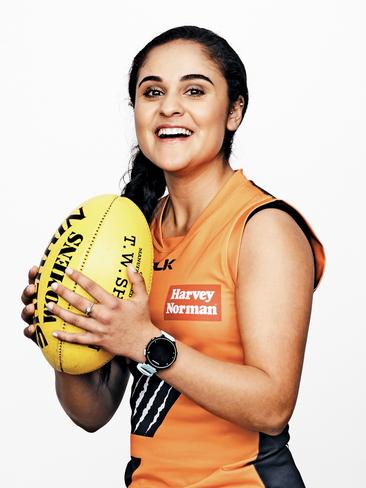
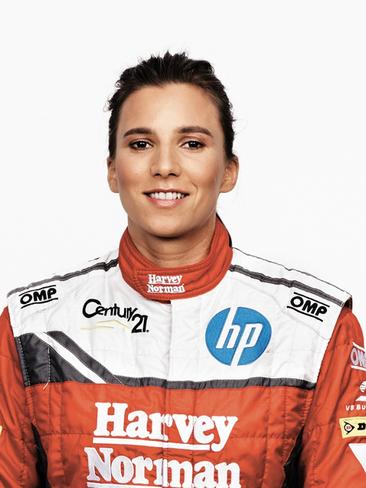
SIMONA DE SILVESTRO
Age: 28
Sport: V8 Supercar racing
You don’t get the nickname “Iron Maiden” without a good story to back it up. Here’s Simona’s: in 2011, her car crashed, flipped and burst into flames. Two days later, and still nursing the injuries, the Swiss-born driver was back on the racetrack. “As a race car driver you don’t really have a fear of anything,” she says.
This includes tough daily workouts of cardio, trackwork and running to deal with the heat and physical demands of racing. Simona now lives in Australia and has been signed as the first fulltime female V8 Supercar driver since 1975. She says, “Nothing’s impossible if you have a dream or are passionate about something, really work hard and believe in yourself.”
TOP TIPS FOR 20s
Run for your metabolism: “In your late 20s, the metabolism slows so you don’t respond as well to exercise and you need to do more to get the same response,” Burgess says. “Running increases
metabolism, the heart rate and burns kilojoules.”
Avoid going to extremes: “Twenty-year-olds are easy targets for fad diets and extra alcohol use, which can create damage to their bodies,” Marchese says. Take a more consistent approach.
Too busy? Try HIIT: “Fifteen-minute high-intensity interval training on days where workout windows are shorter will get results,” Marchese says.
FIT GEAR FOR 20S
Be stylish while you sweat: Garmin Fenix 3 GPS smartwatch ($896, harveynorman.com.au)
Keep your phone on you while you exercise: PocJox women’s half shorts ($54.95, pocjox.com)
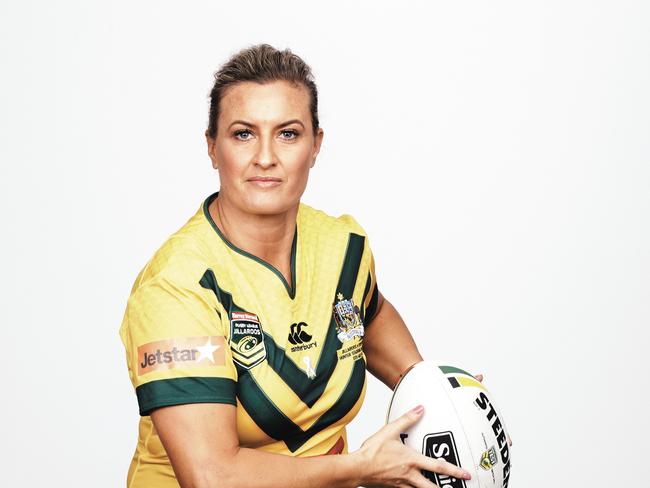
RUAN SIMS
Age: 34
Sport: Rugby league
Turning 30 was a homecoming of sorts for Ruan. Up until the age of 12, rugby league was her passion but the fleet-footed back gave it up after being told “girls aren’t allowed to play”. She rediscovered the game five years ago and now leads the Australian team, the Jillaroos, as captain.
“Once we step over that white line we’re not women or girls, we’re just footballers and we get out there because we love it,” Ruan says. “I’m a very intrinsically motivated person and being captain of
the team, I need to perform to the best of my ability and not let my team down.”
It’s an ethos that extends to her work as a firefighter and NRL Community Ambassador, where she’s been involved in programs on mental health, wellbeing and domestic violence. “I’m very passionate about educating people about things that are prevalent in our society,” Ruan says. “The NRL and my career allows me to get into a lot of different community groups.”
Somehow Ruan manages to fit this work in with a brutal weekly training regimen.
“I do weightlifting three times a week, gymnastics four times, conditioning four times, three flexibility sessions and two speed sessions,” she says. Her advice for anyone who wants to start playing a sport in their 30s? “It’s never too late,” she says. “There are also CrossFit gyms around where you don’t need to be a part of the team sport but you can still have a team environment, work out, get stronger and make a lot of friends.”
TOP TIPS FOR 30s
Do resistance training twice a week: “By now you’ve probably reached your peak bone mass so it’s all about maintaining what you’ve got,” Marchese says. “Weight-bearing exercise and resistance training can all help because this type of exercise places a positive stress on bones.”
Do a weekly yoga session: “The aches and pains that start to creep in at this age are often the result of poor flexibility and overall lack of fitness,” Marchese says. “Starting slow and doing something you enjoy will minimise your injury risk and keep you motivated too.”
Join a club to consistently move: “I think touch football, social netball and basketball are all fantastic
exercises because you feel obligated to turn up each week,” Burgess says. “I also really like Running/cycling clubs for the same reason.”
FIT GEAR FOR 30S
Get instant performance feedback: Polar M400 sports watch ($298, harveynorman.
com.au)
Keep your soles supported: New Balance Vazee Rush v2 ($160, newbalance.com.au)
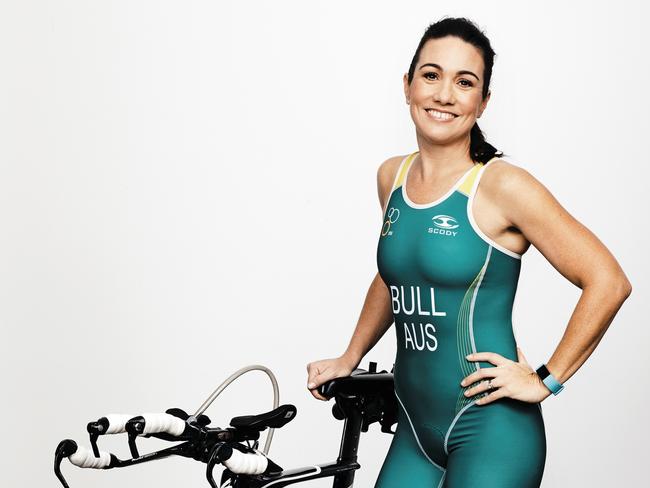
CARLY BULL
Age: 42
Sport: Triathlon
There are few people who can say they’ve swum 3.86 kilometres, cycled 180.25 kilometres and run 42.20 kilometres all in one go. By completing an Ironman, Carly is one of them, and she did it all
for the first time at the age of 42.
The physiotherapist and mum-of-three grew up wanting to do triathlons but “life got too busy” in her 20s. It wasn’t until her 30s that she began to chase the idea, simply because she was “bored of just running”.
“It’s so satisfying doing triathlons because it’s something I thought was unachievable,”
she says. One event turned into another, and the triathlons got bigger and bigger — fast forward to May this year and Carly took on her first Ironman event, finishing in 12 hours and 10 minutes. This was two hours shorter than the time she was aiming for. “It was such an incredible experience,” she says. “I bawled my eyes out coming up to the finish.”
Carly does five training sessions a week, including long and short runs and rides, plus a fortnightly pool session. On weekends, she fits in exercise around taking her kids to their sports. “For example, when my daughter goes to training, I drop her off then go for a run.” She adds, “My husband is amazingly supportive — he runs as well so we make it work.”
If you’ve never played sport, but want to follow in Carly’s lead, there’s nothing to hold you back. “I’ve never really played team sports, it’s just not my thing,” she admits. “It’s funny now that I’ve come across as being so sporty. I’m not sporty, I’m just fit. My sport doesn’t require any specific skills, you’ve just got to be determined and disciplined.”
TOP TIPS FOR 40s
Don’t go too hard, too fast: “Injury concerns only arise if someone begins a new exercise program too vigorously,” Burgess warns. He recommends committing to only two or three sessions a week to begin with. “The goal is to establish a routine, so therefore take it fairly easy in the first few weeks.”
Increase incidental exercise: “It’s a great way to add physical activity to a busy day,” Marchese adds. “You’ve heard it all before but are you really making the effort to walk rather than drive, take the stairs rather than the elevator and do some squats when you hang out the clothes?” Exercise is all around you, one just has to look for it.
Keep bones and muscles strong: “At this age it’s a good idea to make sure you include some resistance training in your program. Two to three days of bodyweight training per week can be awesome for busy women because you can do this anywhere, anytime. This includes exercises such as squats, lunges and push-ups,” Marchese says.
FIT GEAR FOR 40S
Be motivated by tracking: Fitbit Charge 2 fitness monitor ($248, harveynorman.com.au)
Strengthen your core for balance: PowerTube Pro CoreBall Pro ($49.99, rebelsport.com.au)
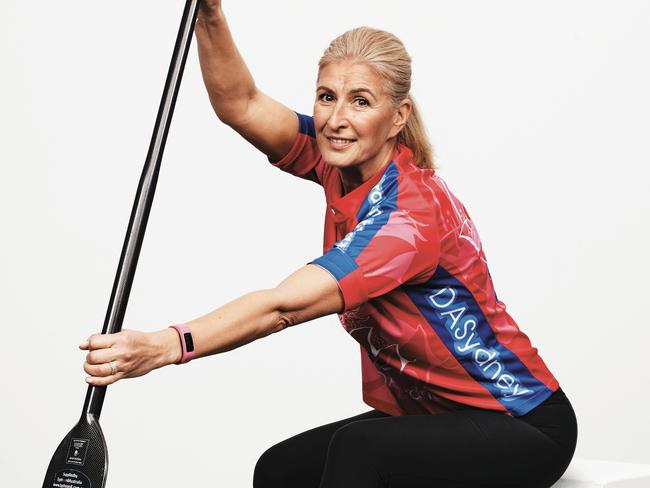
MICA SPASOJEVIC
Age: 55
Sport: Dragon boat racing
Five years ago, sports doctor Mica fell in love with dragon boat racing in a surprising way: by surviving breast cancer.
“After my treatment, a friend of mine introduced me to a club, Dragons Abreast, where the majority of women were breast cancer survivors. The doctor said paddling was fantastic for recovery from breast cancer and lymphoedema,” she says.
Since then, Mica has won four medals at the 2014 World Championships in Italy and competed again this year in Adelaide. Her team is currently preparing for the World Championships in Hungary in 2018.
She has up to three dragon boat sessions a week and likes to dive into the ocean for a swim after every Saturday morning session. On days when she’s not in the water, she also walks and practises Bikram yoga.
Mica encourages women who want to take up something new. “There are so many examples, especially in our sport, of women who’d never played before and now have had excellent results. There’s a 70-year-old lady in our club who’s doing regular land training, paddling on the water and representing the Australian team,” Mica says. “It’s been proven that starting sport at any age, even at my age, is going to prevent heart disease, diabetes and osteoporosis. It’s only going to have a positive impact.”
TOP TIPS FOR 50s
Stay consistent: “Where possible, aim for 150 minutes of moderate intensity or 75 minutes of vigorous aerobic activity per week. Walking, jogging, bike riding and swimming can all be good options,” Marchese says.
Strengthen your bones: Weight-bearing and strength exercises, such as squats and lunges, can help to optimise bone strength and reduce the risk of falls.
Ease into your workout: “If menopause symptoms are zapping energy, start sessions with 10 minutes of light activity or break your session up into 10-minute blocks,” Marchese says.
FIT GEAR FOR 50S
Run light: Fitbit Flex 2 fitness tracker ($148, harveynorman.com.au)
Great for beginner water training: Speedo Elite Pullkick board ($45, speedo.com.au)
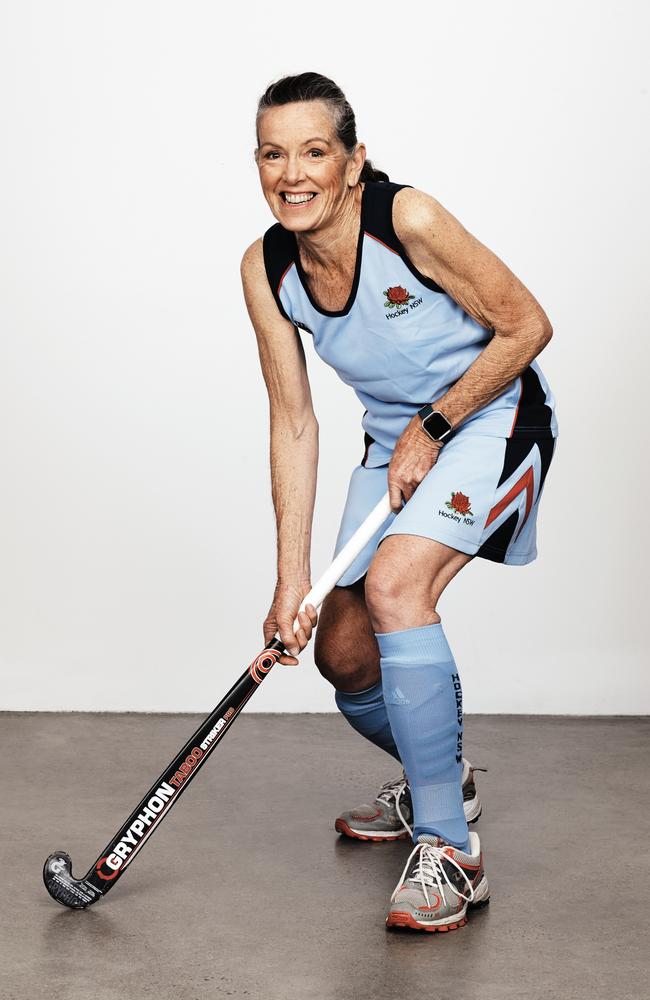
ALISON CHALKER
Age: 65
Sport: Hockey
When Alison steps onto the hockey field she gets odd looks from the opposition, but she’s used to it. At 65, she’s often the oldest player, sometimes competing against kids as young as 15. Once the whistle blows and the game starts, though, Alison is running and hitting like everyone else.
“I play as though every game is my last because, you never know, it could be, so
I give it all I have,” she says. “I’m slower than I used to be but it doesn’t stop me.”
Whether it’s playing in the World Masters Games or for her local Northern Districts hockey club, the grandmother of two is out on the field at least once a week. “You can be silly, you can be a kid again,” she says.
Alison walks three to nine kilometres every day — “why would you drive when you can walk?” she says — and loves physical activity for the stress release. “I’m not one to sit around and think I can just read a book and laze by the pool having a lovely time — it will drive me nuts.”
Of her age, she says, “People say, ‘It’s amazing, you’re still playing’, and I think, well, why not? I can move, there’s nothing wrong with me, I’ve got all my bits and pieces, so there’s no reason not to.”
TOP TIPS FOR 60s
Start moving but ask a medical professional for a tailored program:
“By now the effects of ageing are more apparent and avoiding exercise only accelerates decline in health,” Marchese says. “We still need to move, but we just may need to alter the activity.”
Join a social fitness group:
“Tennis (depending on your joints), golf, walking groups, dance clubs and swim teams are great options,” Marchese says. “Keep it realistic, social, achievable and fun.”
Avoid contact sports if you suffer from osteoporosis:
“Don’t add too much stress to the bones. Some appropriate resistance training can strengthen the body,” Marchese says.
FIT GEAR FOR 60S
Stay stylish, functional and cool: Fitbit Blaze fitness watch ($317, harveynorman.com.au)
Add weight to your cardio training: Reebok 0.5kg hand weights ($15,
rebelsport.com.au)
IN OTHER NEWS: HEIGHINGTON TO LET LOOSE AFTER GF
Originally published as How to be fit and strong at any age

